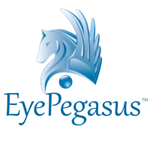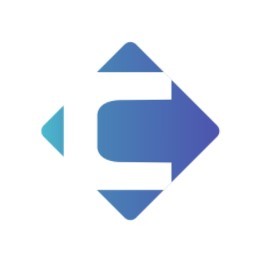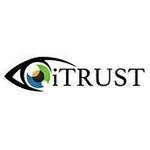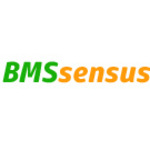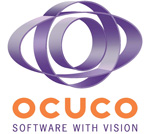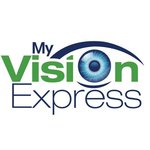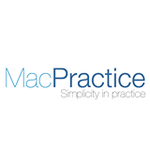What Is Optometry Software?
Optometry software is a specialist application that helps to streamline and improve the workflow of optometry practices. It offers a wide range of features and capabilities, including electronic health records, patient scheduling, billing, and inventory management. This program is specifically designed to fulfill the unique demands of optometrists, allowing them to efficiently manage their patients' information while providing high-quality care.
One of the most significant advantages of optometry software is its capacity to digitize and retain patient records. Unlike traditional paper records, which are often misplaced or damaged, optometry software allows electronic health records to be safely preserved and quickly accessible. This not only saves time, but also guarantees the accuracy and protection of patient data.
In addition to record-keeping, optometry software provides a variety of scheduling options, enabling practices to properly manage patient appointments depending on availability and resources. This reduces the danger of overbooking or double-booking appointments, resulting in smoother operations and higher patient satisfaction.
Furthermore, optometry software can help with billing and inventory management. It automates invoicing and insurance claims, resulting in accurate and timely reimbursements. This enables practices to keep track of their funds and limit the possibility of errors. When shopping for optometry software, it is critical to evaluate the precise features and integrations that will meet your practice's demands.
For example, some software may provide patient portals for online appointment booking and communication, whilst others may include remote access capabilities for telehealth services. It is also critical to ensure that the software complies with any regulations, such as HIPAA. Investing in optometry software can improve your practice's efficiency, accuracy, and patient happiness. With the appropriate software, optometrists may improve their day-to-day operations while focusing on providing the greatest care for their patients.
What Are The Recent Trends In Optometry Software?
Optometry is a continually growing science, and as technology advances, so does optometry software. With the rise of digital health and telemedicine, the demand for efficient and user-friendly optometry software has skyrocketed.
As a buyer, you must be aware of current developments in optometry software so that you may make an informed decision when investing in software for your office.
1. Cloud-Based Software: One of the most significant changes in optometry software is the transition to cloud-based solutions. This enables optometrists to access patient data, timetables, and other critical information from anywhere, enhancing flexibility and productivity. Cloud-based software also ensures that data is protected and backed up, reducing the likelihood of loss.
2. Integration With Electronic Health Records (EHRs): Since the passage of the Health Information Technology for Economic and Clinical Health (HITECH) Act, there has been a greater emphasis on integrating EHRs and optometry software. This results in a more streamlined and efficient patient experience because all of their information is available in one location. It also improves communication and cooperation among optometrists and other healthcare providers.
3. Artificial Intelligence (AI) And Machine Learning: AI and machine learning are transforming the healthcare business, with optometry software being no exception. These technologies enable software to evaluate enormous amounts of patient data and provide insights for diagnosis and treatment. This not only saves time, but also increases accuracy and precision.
4. Mobile Applications: Mobile technology is increasingly being used in healthcare, and optometry software is no exception. Mobile apps enable optometrists to access patient data on the fly, manage appointments, and even conduct virtual consultations with patients. This not only promotes convenience, but it also boosts patient engagement and satisfaction.
5. Patient Portals: Optometry software with patient portals facilitates contact between patients and optometrists. Patients may easily access their details, book appointments, and even make payments via these portals. This improves transparency and confidence between people and their healthcare professionals.
Benefits Of Using Optometry Software
Optometry software, often known as electronic health record (EHR) software, is specifically developed to help optometrists manage their practices and patient care. This sort of software has features that expedite administrative work and improve patient experience, making it an indispensable tool for today's optometrists. One of the primary advantages of adopting optometry software is the increased efficiency and organization it provides for a practice.
Optometrists can save time and eliminate errors associated with manual data entry by storing and accessing patient information in a centralized location. This also enables faster retrieval of patient records, making the overall workflow more efficient. Another feature of optometry software is the ability to schedule appointments and receive reminders. This feature allows practitioners to easily manage their schedules and guarantee that patients show up for appointments.
This decreases the possibility of no-shows and helps to make the best use of the optometrist's time. Optometry software also supports computerized prescribing, making medication management more efficient and accurate. Prescriptions can be mailed directly to pharmacies, removing the need for patients to physically pick up their medications. This ensures that medications are administered in a timely and accurate manner, hence boosting patient satisfaction.
Furthermore, optometry software provides customized templates for documenting patient visits, allowing optometrists to more easily record and follow patient progress. With the ability to include notes, photos, and test results, the program provides a thorough summary of a patient's medical history, assisting in correct diagnosis and treatment. One of the most major advantages of optometry software is its capacity to boost revenue for a practice.
With built-in billing and coding features, practices can quickly track claims and ensure that they are submitted appropriately and on time. This minimizes the chance of claim denials and improves the financial health of a practice. Optometry software also assures adherence to industry norms and laws, such as HIPAA. This gives practices peace of mind by ensuring that patient data is securely maintained and protected.
Important Factors To Consider While Purchasing Optometry Software?
When choosing optometry software, you must examine several crucial elements to ensure that you make an informed purchase that matches your practice's specific needs.
Here are some crucial aspects to consider while comparing different optometry software options:
1. Functionality And Features: One of the most important considerations is the software's functionality and features. It should have all of the tools and capabilities you need to streamline your daily operations, such as appointment scheduling, patient record management, and report generation. It should also support advanced features such as telemedicine, inventory management, and system integration.
2. User-Friendly Interface: The interface for optometry software should be intuitive and simple to use. This is especially crucial if you have a large workforce using the program, since it will shorten the learning curve and boost productivity. Look for software with a well-organized structure and customizable choices to fit your needs.
3. Integration With Existing Systems: Determine whether the optometry software can work easily with your existing systems, such as the electronic health record (EHR) or billing software. This saves you time and effort in manually transferring data between systems while also ensuring accurate and up-to-date information across all platforms.
4. Assistance And Training: Before making a purchase, determine the type of assistance and training provided by the software provider. They should provide your team with full training to ensure a successful installation, as well as continuing help to troubleshoot any issues that develop. Look for organizations that provide 24-hour customer assistance to address any problems or technical issues.
5. Data Security: Protecting patient information is critical in the healthcare sector. To protect sensitive data, use optometry software that includes strong security features like encrypted data storage and secure backups. It should also adhere to HIPAA rules and other data protection laws to preserve the privacy and confidentiality of your patients' data.
6. Scalability And Price: When comparing optometry software solutions, consider your present practice size as well as prospective expansion. Choose software that can meet your current demands while also allowing you to scale your practice as it grows. Also, check pricing plans to ensure that you are receiving the necessary features and support at a reasonable cost.
What Are The Key Features To Look For In Optometry Software?
When selecting Optometry Software, there are several crucial characteristics to examine that will help you make an informed purchase. As optometry firms modernize and digitize, it is critical to invest in software that streamlines procedures, increases efficiency, and improves patient care.
The following are the key features to look for when searching for Optometry Software:
1. Electronic Healthcare Records (EHR): EHR is an important component to have in Optometry Software. This feature enables optometrists to keep a digital record of their patients' medical histories, which includes vision exams, diagnoses, treatments, and insurance information. With EHR, clinics may access patient information quickly, securely, and in real time, resulting in fewer errors and more efficient processes.
2. Appointment Scheduling: Efficient scheduling is essential for any optometry practice, and optometry software with an appointment scheduling tool can help you manage your appointments more effectively. Look for software that allows you to customize your schedule, sends out automated reminders, and updates in real time. This feature can also help to reduce no-shows and increase overall patient satisfaction.
3. Billing And Insurance Administration: Optometry software with billing and insurance administration features can save time and reduce billing errors. This tool enables practitioners to submit claims electronically and monitor the progress of payments. It can also handle billing for a variety of insurance plans, making the procedure more efficient.
4. Inventory Management: Inventory management is critical in practices that offer eyewear, contact lenses, and other optical products. Optometry software with inventory management capabilities can assist in tracking stock levels, monitoring sales, and generating product performance reports. This tool can also help you manage suppliers, minimize waste, and cut costs.
5. telemedicine Capabilities: As telemedicine becomes more prevalent, optometry software that supports telehealth can be a significant tool. This feature enables practitioners to hold virtual appointments with patients, making it more convenient for both patients and practitioners. It can also increase the practice's reach, accessibility, and patient happiness.
6. Integration With Diagnostic Devices: Integrating optometry software with diagnostic devices can help assure accurate diagnoses and efficient workflows. This function enables automatic data transfer from devices such as autorefractors, fundus cameras, and visual field analyzers, removing the need for manual data entry.
7. Customizable Templates: Another important feature to look for in optometry software is the ability to create customized templates for clinical notes, prescriptions, and other documents. Pre-designed templates can save time and ensure document consistency across the practice.
8. Data Security: Finally, while dealing with sensitive patient information, data security is critical. Look for optometry software that includes strong security features, regular backups, and HIPAA compliance to protect patient data and ensure confidentiality.
Why Do Businesses Need Optometry Software?
In today's competitive market, optometry businesses are constantly seeking for methods to streamline operations, increase efficiency, and deliver excellent patient care. Optometry software has shown to be an essential tool in reaching these goals. Optometry software is a comprehensive system that integrates patient management, appointment scheduling, inventory monitoring, invoicing, and reporting into a single platform.
This technology is specifically intended to meet the unique demands of optometry practices, and it has the potential to greatly impact a business's profitability. One of the key reasons organizations use optometry software is for effective patient management. Using a centralized database, optometrists may simply access and update patient records such as medical history, prescription details, and appointment history.
This streamlines the entire patient process, from check-in to follow-up appointments, resulting in higher overall satisfaction. Furthermore, optometry software makes appointment scheduling easier for consumers and staff. Patients can book appointments online or using a mobile app, which offers convenience and flexibility. Practices can also use automated appointment reminders to reduce no-shows and improve throughput. Inventory management is another important feature of optometry software, allowing practices to keep track of their supply of eyewear, contact lenses, and other supplies.
This helps to avoid over or understocking, decreasing waste and enhancing profitability. In addition, optometry software has advanced billing tools including insurance claim processing and electronic health record (EHR) integration, which saves time and reduces errors. Real-time data and analytics enable organizations to easily track their financial performance and make educated decisions.
How Much Time Is Required To Implement Optometry Software?
The time necessary to integrate optometry software varies according to the software and your practice's demands. On average, it takes a few weeks to a few months to properly incorporate and integrate optometry software into your business. The first step in deploying optometry software is selecting the appropriate software for your firm. This may include studying several possibilities, comparing features, and obtaining software demos or trials.
This procedure can take many weeks to ensure you locate the ideal candidate for your practice. Once you've decided on the program, the following step is to set it up and configure it for your practice. This can include entering patient and practice data, modifying workflows, and integrating with other systems like your electronic health records. This process can take many weeks to ensure that everything is properly set up.
Training is another critical component of implementing optometry software. To reap the most benefits from the program, your employees must be instructed on how to use it properly. This can take many weeks and may necessitate regular training as your employees become acquainted with the new system. Finally, there is the go-live phase, in which you formally begin using the software in your practice.
This may require a period of transition and adjustment as your employees become accustomed to the new system. It is recommended that you set a go-live date and allow for some flexibility in the first few weeks as your team adjusts to the new software. Overall, depending on the complexity of the software and the size of your practice, adopting optometry software might take between 4 and 12 weeks. It is critical to plan ahead and allow enough time for a smooth transition to ensure that the software is completely integrated into your clinic and that your staff is trained and comfortable using it.
What Is The Level Of Customization Available In Optometry Software?
Optometry software is a valuable tool for optimizing operations, maintaining patient data, and increasing overall efficiency in optometry businesses. When looking for the best optometry software, one crucial factor to consider is the degree of customization it provides. Customization enables a more personalized and bespoke experience, making it easier for practices to modify the program to their individual requirements. So, what level of customisation is available in optometry software?
Let's go deeper into this subject and look at the many levels of customization in optometry software.
1. Basic Customization: Most optometry software provides basic customization capabilities, allowing practices to add their logo and practice information to patient communication tools like emails and appointment reminders. This easy tweak can help the practice develop a professional and consistent brand image.
2. User Interface Customization: User interface customization is the process of modifying the software's layout, color scheme, and typefaces to reflect the user's preferences. This level of customisation is beneficial for practices that have a distinct visual appeal or want a specific layout for ease of use.
3. Customizable Templates: Some optometry software provides configurable templates for a variety of documents, including patient forms, prescriptions, and exam templates. This enables practices to create custom templates or adapt current ones to meet their individual requirements and workflows.
4. Custom Reporting: Custom reporting is an essential feature for practices seeking to monitor and measure their success. Some optometry software enables practices to build custom reports, allowing them control over which data points to include and how to present the information for better insights and decision-making.
5. Integrations: Many optometry software packages provide interfaces with other systems, such as electronic health records (EHR) and accounting software. This level of customization enables practices to integrate their optometry software with other systems in order to expedite operations and enhance workflow.
6. Custom Development: Some optometry software suppliers provide custom development services for practices that have unique demands or specifications. This entails working closely with the practice to develop customized features and functionalities that are not accessible in off-the-shelf software.
Which Industries Can Benefit The Most From Optometry Software?
Optometry software is a powerful tool that may help many sectors, particularly those concerned in vision care. Whether you own a small independent office or a large network of clinics, optometry software can help you optimize your daily operations and provide a better overall patient experience. The healthcare business stands to benefit the most from optometry software.
This program is intended to improve patient care and communication among healthcare practitioners, making it an indispensable tool for any eye care center. Optometry software allows healthcare practitioners to easily access and manage patient records, arrange appointments, and even send electronic prescriptions, saving them time and boosting accuracy. Optometry software is also essential for optometry practices.
It enables optometrists to efficiently manage their whole operation, including patient scheduling, invoicing, inventory management, and analytics. This allows practitioners to concentrate on providing quality care and improving the patient experience rather than becoming bogged down in administrative responsibilities. The retail industry can also tremendously benefit from optometry software.
Whether you are a solo eyewear business or a retail chain that provides optometry services, this software can make ordering and inventory management easier. Optometry software, which includes capabilities like computerized inventory management and ordering, assists merchants in keeping track of their stock levels and accurately fulfilling client orders. Finally, optometry software is advantageous to educational institutions.
Schools and universities with optometry programs can use this software to improve their teaching methods and provide students hands-on experience managing patient records, scheduling appointments, and more. This not only prepares students for careers in optometry, but it also helps educational institutions keep up with the latest technology breakthroughs.
Conclusion
To summarize, selecting the correct optometry software can significantly increase the efficiency and profitability of your operation. When comparing different solutions, it is critical to examine features, usability, customer service, and pricing. You can locate the ideal software for your practice by thoroughly examining your individual requirements and comparing several options.
Remember to study reviews and get suggestions from industry colleagues to make an informed conclusion. With the appropriate optometry software, you can optimize your workflow, increase patient happiness, and concentrate on providing exceptional eye care. Invest wisely in a dependable, comprehensive, and user-friendly optometry software to propel your practice to new heights.


